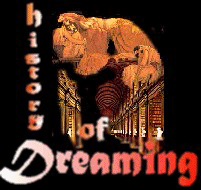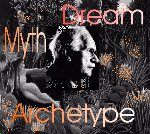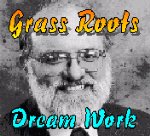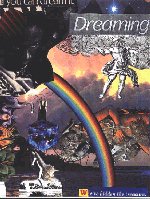|
|
||
|
Lesson 1
| Recall and Community Connections Dream Recall Basics: Some basics and helpful hints for those who don't recall & journal, or those wanting to improve these skills. Connections to online sites offering help from the simplest tips on recall to exploration of long term dream journal keeping. |
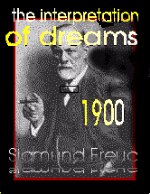 |
Lesson 2 & 3 | Sigmund
Freud Recovers the Dreamwork Week 2. Dream Techniques From Freud - Free Association & the Unconscious Since my interest is not in teaching psychotherapy but in tapping into each individuals own source of (a. Creativity and (b. Inner authority on meaning and value, my approach is historic and playful, seeking in Freud want can be used as productive viewpoints to engage dream imagery. Some basic ideas are needed for this. Dream Techniques From Freud - The Dream-Work + References. Freud's model for dreaming is still so highly referenced in academic and clinical thought that I felt it was essential to include this a part of an overview on dream theories. Also, as postmodern thinking becomes dominant, it is important to see the psychoanlytic roots and bias that come with it. |
|
Lesson 4
& 5 | Ancient Dreams and Carl G. Jung I C. G. Jung I. Me and my Shadow. I feel that even a quick foray into Jung yields potent tools in perception and significant relationships with oneself. But its a little odd for many to learn how to approach icky, yucky stuff in dreams as potential gold mines. C. G. Jung II: Beyond & Through the Personal - This essay carries Jung's basic model into contact with the non-personal realms as they relate to dreams and dreaming and extends the idea of what a relationship with the unconscious might look like and how dreams may mediate this relationship. |
Lesson 8 & 9 | More
Jung, Jungians and Mythic Campbell Week 4. Jung III: Archetype & Myth One of the most accessible & popular aspects of Jungian thought and practice evolves from Jung's love of story, fables and myth. Campbell helped bring to the late 20th Century American Culture this love of story and together they offer tools for those of us in love with myth to continue the journey. When combined with dreamwork, the study of myth becomes a study of the journey of ones self as well as The Self. Jung IV: Jung and Dreams. Though Jung never wrote a separate book on dreams, there is *so* much material that a special essay is needed to give a general lay of the land. Although Jung felt *each* dream should yield its own new theory, the Jungian have developed a wide array of helpful techniques. While one could spend several lifetimes mastering these techniques, many are accessible right away with a little practice. As a matter of fact, Jung thought dreams were *already* doing what they needed to be doing. We simple help the processes along. |
|
|
Lesson 10 & 11 | Adler, Surrealism, Phenomenology, Gestalt Dream Work Week 5: Other Pre-1960's
Dream Theories. All is not Jung and easily Freudened! The Surrealist
Movement championed dreams as a path away form the deadness of everyday
worldviews and a gateway into novel experience and surreality. Phenomenology
combined with psychoanalysis to produce ideas about approaching dreams
on their own, bracketing out our pre-conceived notions and allowing the
imagery to evolve on its own. This essay explores these and other dream
movements and theories that haven't gotten as much attention as they deserve.
|
Lesson 8 & 9 | More
Jung, Jungians and Mythic Campbell Week 6: Dreambody and Experiential Dreamwork. One of the areas that came into the light in the past 30 years in therapy has been the body. This essay looks at two major practitioners who have combined Freud, Jung, Reich, Eastern Practices and phemomenology to produce methods we can use to dialogue with the body. In this, there is a paradigm shift from content to process. The dream becomes then a part of our process that we come into dialogue with. Much of this work can be done outside the therapeutic setting. From the Couch to the Culture: Walter Bonime & Montague Ullman While the Jungians have always enjoyed working with manifest dream material, the psychoanalytically trained schools have only come to this more recently. Bonime and Ullman were two pioneers in this regard. Bonime shifted the emphasis to the manifest or visible dream and Ullman taught practices and held groups that could work with this material in non-clinical settings. These techniques have become the standard in grassroots dream work and are used by the Association for the Study of Dreams at their conferences for introducing new participants to group dreamwork. |
|
|
Lesson 14
& 15 | Grassroots DreamWork & Lucid Dreaming Week 7: Grassroots Dream work in America. There has been an explosion of regional small dreamgroups in America which now has its own history, journals, mini movements and conflicts. Some of this movement has been organized and part of other social institutions and communities, but the soul of the movement has been the local dream group, usually of a dozen or less people. These are the people tinkering in the garages with techniques that now form a larger body of literature and practices that can be found in popular literature. Lucid Dreaming and Lucid Control. One of the popular new offshoots of dreamwork is lucid dreaming, or knowing you are dreaming while you are dreaming and being able to varying degrees to control the events and content of the dream. While clinical practice has not been able to respond adequately to this phenomena (usually siting issues of too much ego control based on old theories of the unconscious)the lucid dreamers have formed groups and organizations to address the particular issues invoved and advance the techniques used to increase the frequency of its occurance. This essay explores the history and give some of the most popular techniques for inducing lucid dreaming and control. |
Lesson 16 & 17 | Dreaming
Science & Anthropology
Week 8: Dreaming Science. Why does a dreamworker need to know anything about dream science? Besides how fascinating it is, and defending yourself against attacks by pseudo-scientific remarks as "Oh, science has shown that all dreaming is just chaotic brain garbage." I would like for you to know how science and imaginative exploration go hand in hand. From the first REM discovery nights in the Chicago labs to the latest debates on neural networks, this essay not only explores the history of empirical findings, but takes a more positive approach and looks at how dream science can aid in dreamwork. Dreaming Anthropology. If science
is correct, we have been dreaming for as long as we have been mammals,
maybe longer. If Campbell and Jung are correct, we have been making meaning
from dreams before recorded history. This means that some cultures have
been practicing dreamwork for millions of years. This essay explores a
general, brief overview of what we know about native cultures and their
dream practices. |
|
|
Lesson 18
& 19 | Anthropology II & Dreams and Religion Dream and Western Religion. Dreams were at the beginning of every major axis religion, both East and West, but were later repressed by the orthodoxy. What happened? In this class we trace the development and repression and revival of dream work in Judaism, Christianity and Islam. |
Lesson 20
& 21 | Psychic Dreams, Mutual Dreaming, Incubation, Proactive Dreaming
and Dream Sharing in Cyberspace Week 10: Alternative Dreaming. There is now a wider range of dreaming practices that are being explored besides the the use of dreams for therapy. Some make intentions before going to sleep and incubate dreams. Some find that telepathic powers are increased during dreams. Some people like to meet in their dreams with others at pre-designated places, some like to use dreams for inspiring writing and other arts. Some simply like to *do* things in dreams, increasing the chances of flying, eating, having sex and going on virtual journeys. James Hillman & the Archetypal school have opened the dream to the culture at large, and soon the postmodern writers & cyberspace will be opening us up to unheard of catagories yet to be explored. This essay explores the alternatives and offers options to our usual egoic efforts that impose uses on dreams. Yes, even "being open" is an imposed paradigm. Dream Sharing in Cyberspace. From early attempts at exchanging dreams via modems and telephones to the democratic graphics of the World Wide Web, dream sharing has entered Cyberspace. What are the places where dreams are shared and how is this dream sharing different that traditional methods? Learn all the alleyways and side streets on the Net as well as the major sites for information and community. |
|
| Resources on Dreams
and Dreaming One of the more fun parts of the Networking
is the chance to see what others are doing and have them see what you are
doing. But even more than *seeing* is being. It is not just an information
exchange but a living interconnection and chance to see one's place as
a microcosm in the macrocosm. In native cultures, the process of initiation
took the individual and his/her inner light and opened this lantern to
the society at large. For several millenium we have lost this in Western
Culture as we made the transition from nature bound to technologically
bound reality. Changes happen too fast. Parents can no longer initiate
children into their society, because by the time they could, it is gone.
Seeking all the answers in the paradigm of "out there somewhere besides
nature" has led to ecological disaster and technological horror. But
as with ancient initiations, an element of this transformation is brought
about by the individual seeing his or her own death. As sophisticated moderns,
we see this death as symbolic, but fail to see that its now not so much
just an individual trip as a collective journey. Our culture has seen it's
own death in the bomb and pollution and lose of traditional values. But
like the ancient initiation, we don't really die. Apocalyptic theories
will continue but they error in literalizing the death of the world. Its
simply the death of the modern world. I see two factors emerging in the
modern world that I want to bring forward into the post-modern. The first
is the inner relationship and the other is the outer relationship. The
inner relationship can be mediated by dreamwork, bodywork, and meditation
practices (not literally inner, but a sense that there is value in what
we have, the subtlites of *this* moment and not just what we can get from
Otherness), and the outer relationship with forms the community and can
be mediated by regional and neighborhood organizations and can be mediated
globally via the Net and what is surely to be later, more extensive, and
faster manifestations of the Internet. The inner work provides the access
to the individual and the unique and the outer work allows this individuality
to unfold and be initiated in the multiple fields of social & cultural
practice. In this sense, Dreamwork in Cyberspace provides a model &
practice for profound and diverse developments in the 21st Century, which
see nature & technology in new ecologies as inter-dependent friends
and assitants. This final essay is more a call to the reader to allow the
community to support your individuality by offering the resources we have
developed and finding mutually supportive platforms from which to precede. Richard Wilkerson
More Information about the Class, Dreams and Richard Wilkerson
|
||
